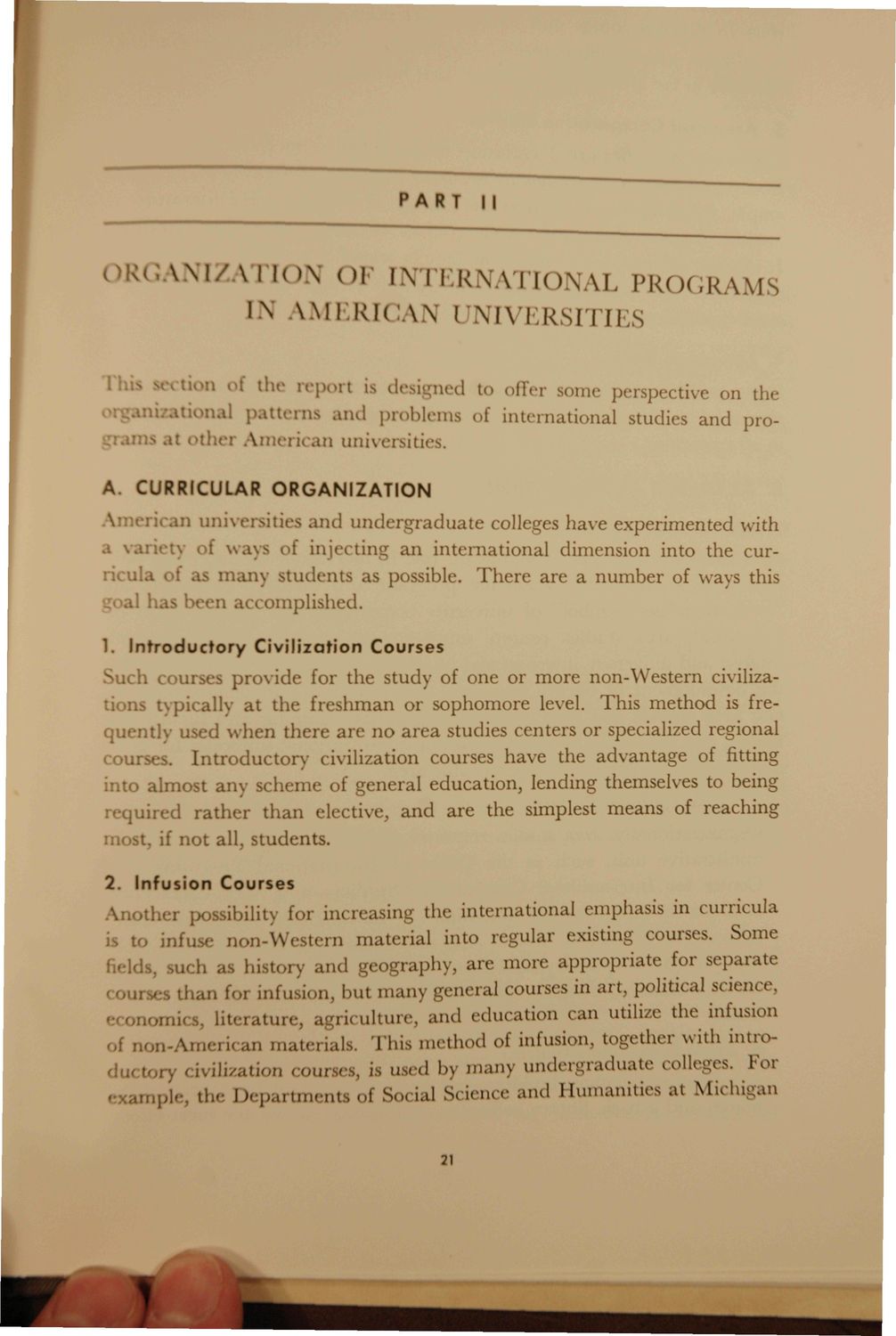Caption: Planning Report - Future of International Programs (1968)
This is a reduced-resolution page image for fast online browsing.

EXTRACTED TEXT FROM PAGE:
PART II a \ \ 1 / \ I K ) \ 01 INTERNATIONAL PROGRAMS 1\ AMI RJCAN UNIVERSIl ILS lh s > the rt-i rt is designed to offer some perspective on the ani/ational patterns and problems of international studies and proat other Am an universities. ORGANIZATION ; A. CURRICULAR an an main bt a 1. I n t r o d u c t o r y C i v i l i z a t i o n Courses MUl tion typically at the freshman or sophomore level. This method is frequently used when there are no area studies centers or specialized regional ourse^. Introductory civilization courses have the advantage of fitting into almost any scheme of general education, lending themselves to being and are the simplest means if not all, students. 2. I n f u s i o n Courses Another possibility for increasing the international empnasis in cuuicuia I to infu non-W< tern material into regular existing courses. Some field ich as history and geography, are more appropriate for separate than for infusion, but many general courses in art, political science, ecoi mics, lit am riculture, and education can utilize the infusion ofn i-A n in materials. This method of infusion, together with introlucti v civilization i mi i , is used by many undergraduate colleges. For c> At, the Departments of Social Science and Humanities at Michigan 21
|